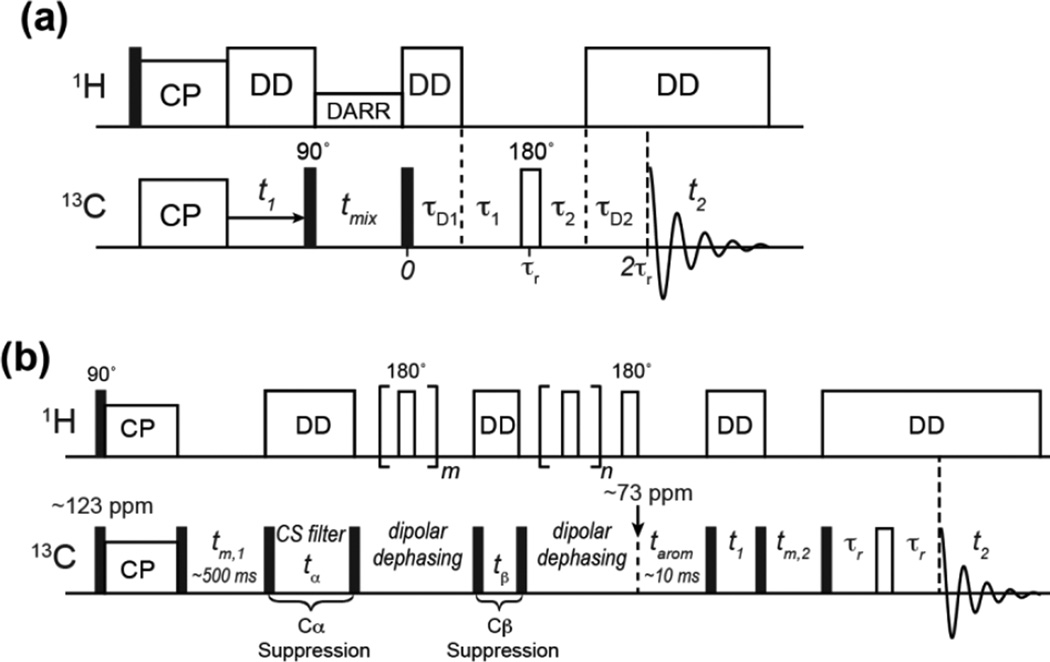Figure 3.
Pulse sequences developed in this work. (a) 2D PDSD with gated 1H decoupling. The gated decoupling period contains τ1 = 60 µs and τ2 = 40 µs for the MAS frequencies used in this work. (b) 2D Aromatic Selection by Spectral Editing (ASSET). The initial spin diffusion period is set relatively long (tm,1 = 500 ms) to ensure polarization of aromatic side chains. This is followed by two chemical shift filters, one for Cα suppression (tα) and one for Cβ suppression (tβ). Each chemical shift filter is followed by a 13C-1H dipolar recoupled z-filter period to destroy the transverse magnetization of other aliphatic carbons that are far off resonance from the aromatic region. A spin diffusion period, tarom, then transfers the remaining aromatic 13C magnetization to the Cβ and Cα of the aromatic residues. 2D correlation of Cβ and Cα resonances is then conducted using a typical PDSD module with Hahn echo detection.

